Planning a trip to Vietnam and Cambodia is an exciting adventure, filled with rich history, stunning landscapes, and vibrant cultures. However, choosing the right time to visit these beautiful Southeast Asian countries can greatly enhance your experience. In this guide, we’ll explore the best times to travel to Vietnam and Cambodia, sharing personal anecdotes, travel tips, and destination highlights to help you make informed decisions.
Understanding the Climate
The climate in Vietnam and Cambodia is influenced by tropical monsoons, which means the best time to visit largely depends on the region you plan to explore.
Vietnam Climate Overview
Vietnam’s climate varies significantly from north to south:
- North Vietnam: Experiences four distinct seasons. Winters (November to March) can be cool, while summers (April to October) are hot and rainy.
- Central Vietnam: Has a split climate, with dry periods between February and May and rainy seasons from September to November.
- South Vietnam: Features a tropical climate with a wet season from May to October and a dry season from November to April.
Cambodia Climate Overview
Cambodia has a tropical climate with two main seasons:
- Dry Season: Lasts from November to April, featuring cooler temperatures and less humidity – ideal for travel.
- Wet Season: Runs from May to October, bringing heavy rain, especially in September and October but also lush landscapes.

Best Times to Visit Vietnam
Peak Season: December to February
During this period, visitors flock to Vietnam to escape the winter chills of the Northern Hemisphere. Expect pleasant temperatures, ranging from 18°C to 25°C (64°F to 77°F), especially in Hanoi and Halong Bay.
- Pros: Great weather, festivals like Tet (Lunar New Year) are celebrated, stunning views in Halong Bay.
- Cons: Higher prices, crowded tourist spots.
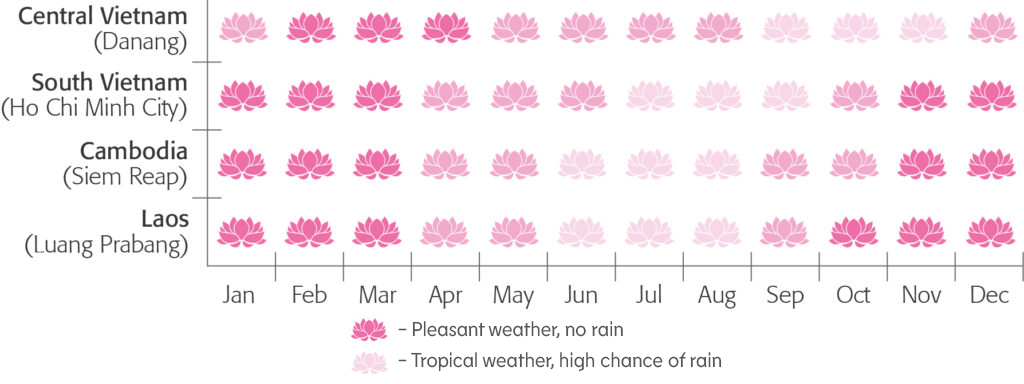
Shoulder Season: March to April & September to November
The shoulder months provide a sweet spot for travelers looking for both good weather and fewer crowds. March and April in the north, along with the dry months of September and October, are particularly beautiful.
- Pros: Moderate prices, fewer tourists, optimal trekking conditions in Sapa.
- Cons: Unpredictable weather in the central regions.
Low Season: May to August
While the weather can be hot and wet during these months, adventurous travelers can find great deals. This is the best time for beach lovers in the south, such as Phu Quoc Island.
- Pros: Lower prices, fewer tourists, vibrant greenery.
- Cons: High humidity, heavy rains possible.
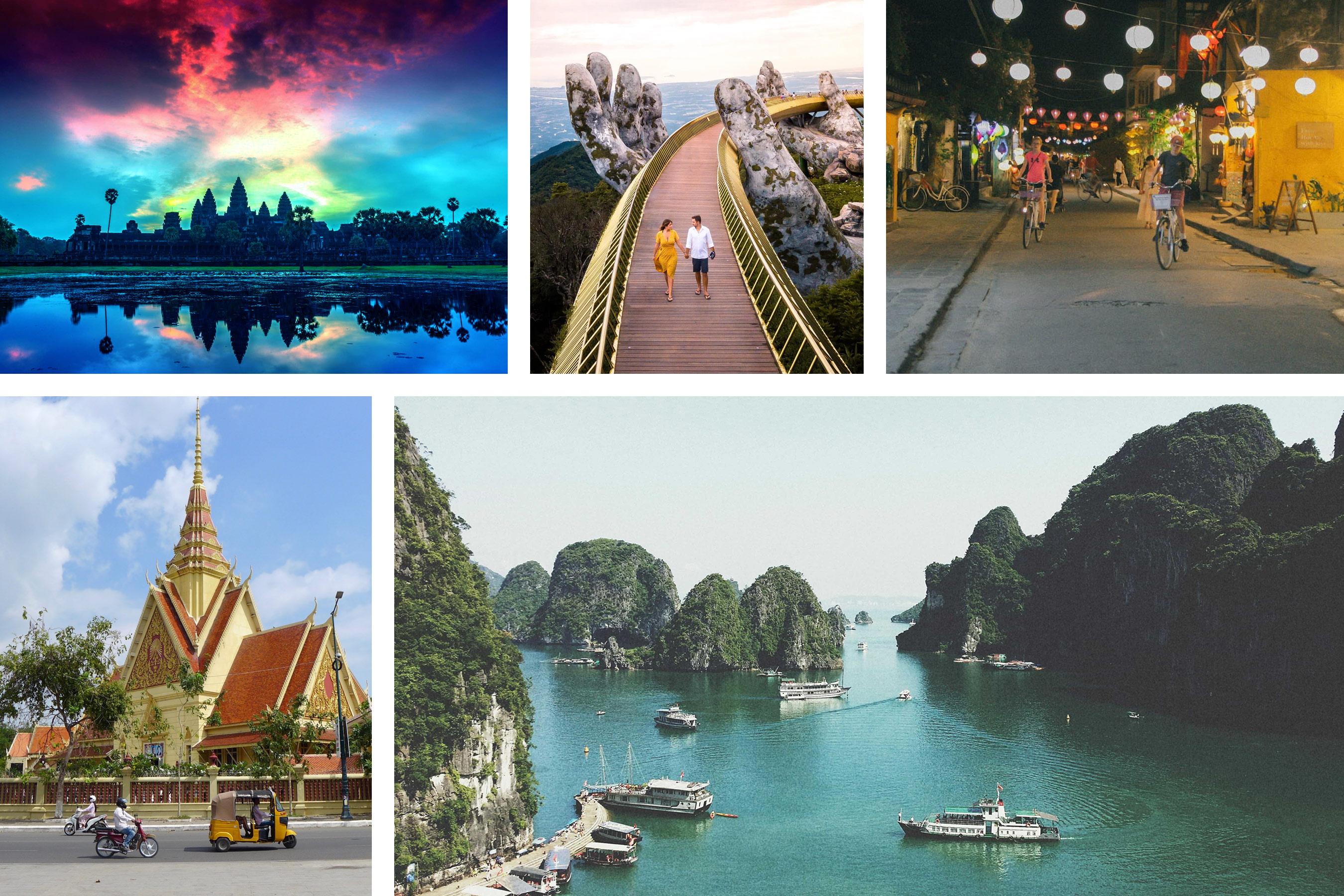
Best Times to Visit Cambodia
Peak Season: November to February
As in Vietnam, this period is the most popular time to visit Cambodia. Temperatures hover around 25°C to 30°C (77°F to 86°F), making it great for temple exploration.
- Pros: Ideal weather for outdoor activities, popular festivals like Water Festival and Christmas.
- Cons: Higher tourist traffic, increased accommodation prices.
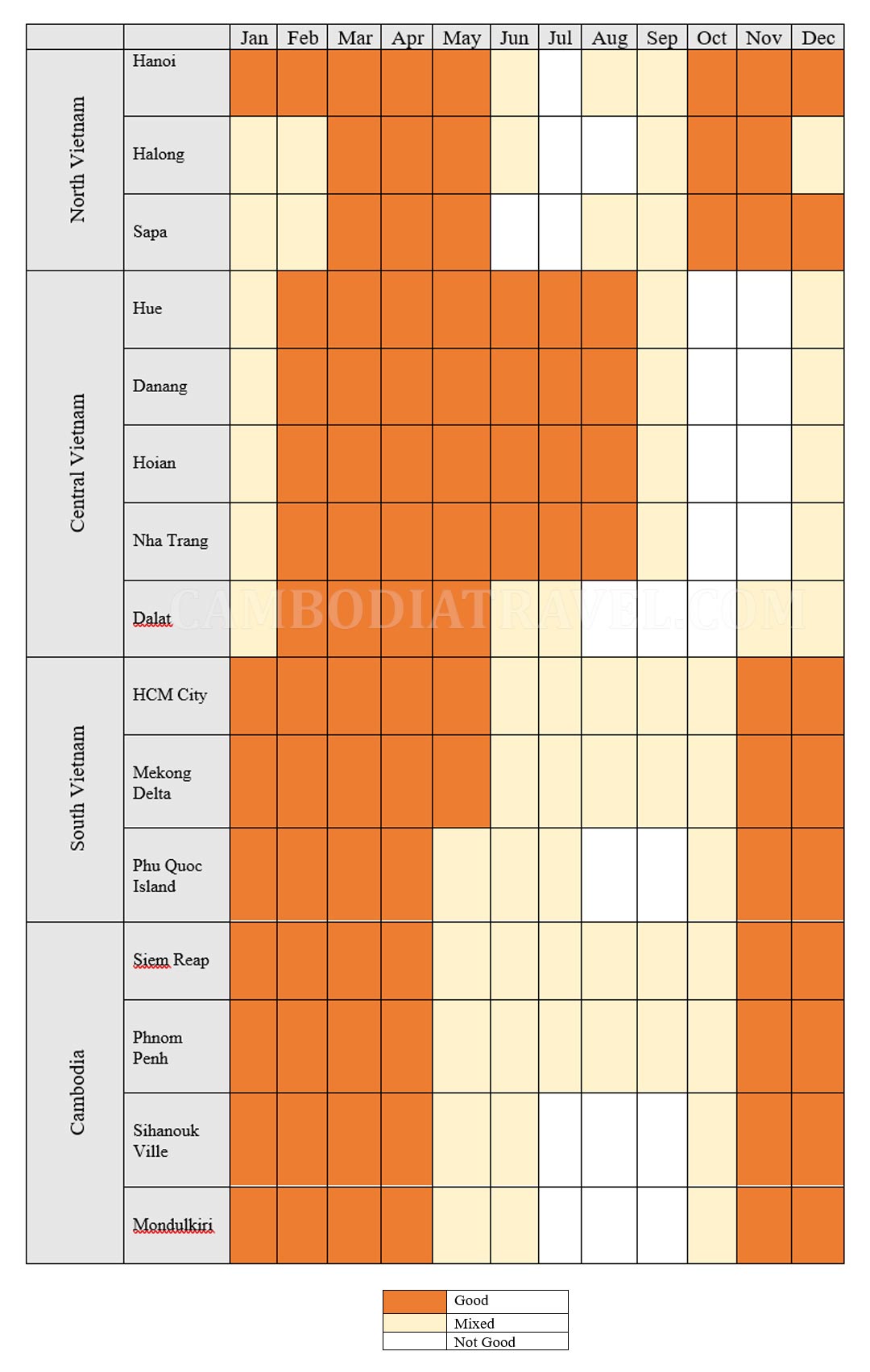
Shoulder Season: March to May
March to May can be quite hot, but the lower number of tourists makes it worthwhile. It’s a perfect time for those who want to enjoy Angkor Wat without the crowds.
- Pros: Fewer crowds, lower prices.
- Cons: Very hot temperatures, approaching rainy season.
Low Season: June to October
During these months, travelers can experience heavy rains, especially in September and October. However, the countryside turns lush and beautiful.
- Pros: Lower accommodation and travel costs, unique landscapes due to rain.
- Cons: Risk of flooding, some tourist sites may be less accessible.
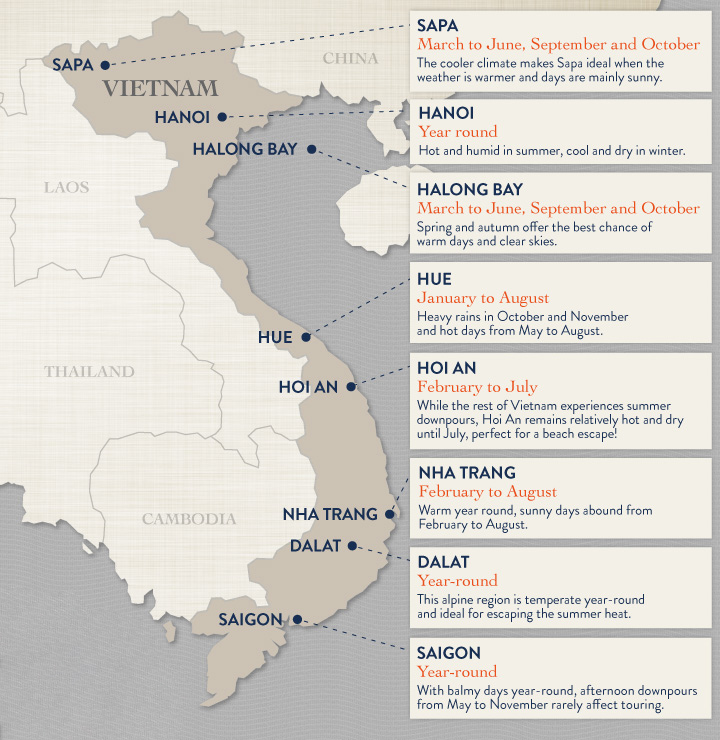
Comparison of Travel Seasons
| Season | Vietnam Weather | Cambodia Weather | Pros | Cons |
|---|---|---|---|---|
| Peak (Dec-Feb) | Cool and dry | Cool and dry | Festivals, best views | Crowds, higher prices |
| Shoulder (Mar-Apr, Sep-Nov) | Moderate | Moderate to hot | Fewer tourists, good deals | Weather variability |
| Low (May-Aug) | Hot and humid | Hot and rainy | Low prices, fewer crowds | High humidity, rains |
Personal Travel Experiences
On my recent trip to Vietnam during the peak season, I found the streets of Hanoi bustling with energy. The incredible aroma of pho wafting from street vendors was irresistible, and I enjoyed countless bowls while watching the world pass by. Visiting the ancient town of Hoi An during the Lantern Festival was nothing short of magical as the buildings glowed under colorful lights.

In Cambodia, I explored Angkor Wat in February, taking advantage of the cooler weather. Watching the sunrise over this ancient temple was an experience that left me breathless. The reflective pool at the front of Angkor Wat created a stunning mirror effect that added to the surreal ambiance.
Travel Tips for Vietnam and Cambodia
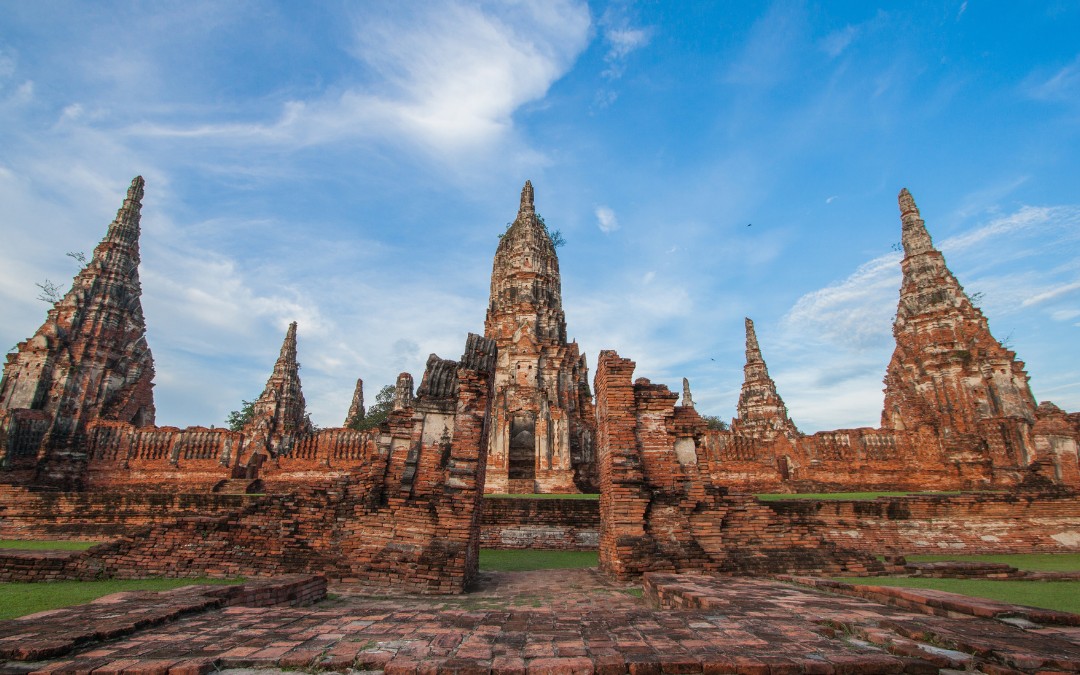
Visa Requirements
Ensure that you check the visa requirements for both countries. Vietnam offers e-visas for many nationalities, while Cambodia provides visas on arrival.
Local Currency
Vietnam uses the Vietnamese Dong (VND), whereas Cambodia uses the Cambodian Riel (KHR), though U.S. dollars are widely accepted in Cambodia. Always carry some local currency for small purchases.
Health and Safety
Make sure to take necessary health precautions, including vaccinations. It’s advisable to drink bottled water and be cautious with street food to avoid stomach issues.
Destination Highlights: Must-See Attractions
Vietnam
- Halong Bay: A UNESCO World Heritage site known for its emerald waters and thousands of limestone islands topped with rainforests.
- Hanoi: The capital city offers a rich history with its centuries-old architecture and a vibrant street food scene.
- Ho Chi Minh City: Known for its bustling markets, historic landmarks, and a lively atmosphere.
Cambodia
- Angkor Wat: The largest religious monument in the world, an architectural marvel that showcases the grandeur of the Khmer Empire.
- Phnom Penh: The capital city, rich in history, especially the Royal Palace and the sobering Tuol Sleng Genocide Museum.
- Sihanoukville: A coastal city known for its beautiful beaches and islands.
Pros and Cons of Visiting Vietnam and Cambodia
Pros
- Rich cultural experiences.
- Delicious street food at reasonable prices.
- Stunning natural landscapes and historical sites.
- Welcoming locals and friendly atmosphere.
Cons
- Language barriers can be a challenge.
- Traffic congestion in big cities.
- Weather variability, especially during the rainy season.
FAQs About Traveling to Vietnam and Cambodia
1. What is the best time to visit Vietnam for a beach vacation?
The best time for a beach vacation in Vietnam is from November to April when the weather is dry and sunny, especially in destinations like Da Nang, Nha Trang, and Phu Quoc.
2. Is it safe to travel to Cambodia?
Yes, Cambodia is generally safe for travelers. However, it’s always important to take standard precautions, avoid poorly lit areas at night, and keep valuables secure.
3. What are the must-try foods in Vietnam and Cambodia?
In Vietnam, don’t miss out on pho, banh mi, and fresh spring rolls. In Cambodia, try fish amok, beef lok lak, and Khmer curry.
4. How can I travel between Vietnam and Cambodia?
You can travel by bus, flight, or boat. The bus is a popular and budget-friendly option, while flights save time. The Mekong River cruise offers a scenic journey.
Final Thoughts
Choosing the best time to travel to Vietnam and Cambodia requires consideration of the weather, personal preferences, and travel goals. Traveling during peak season offers vibrant atmospheres and numerous events, while the shoulder and low seasons allow for a more relaxed experience with lower costs. Whichever time you choose, the beauty and culture of Vietnam and Cambodia await, promising an adventure that will remain in your heart forever.